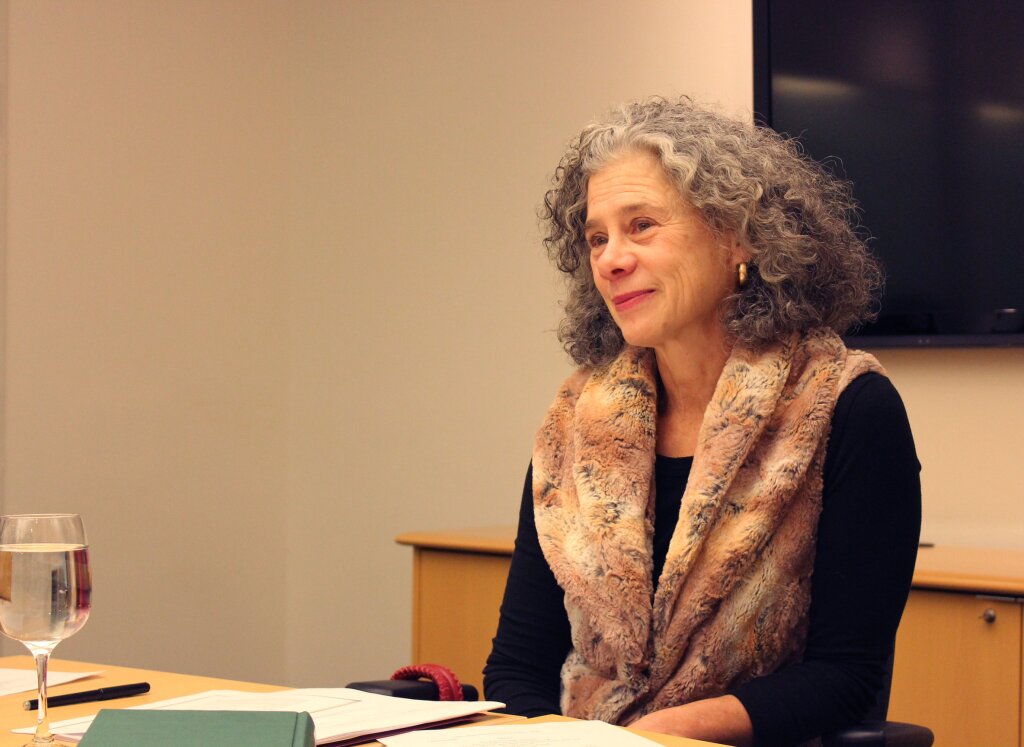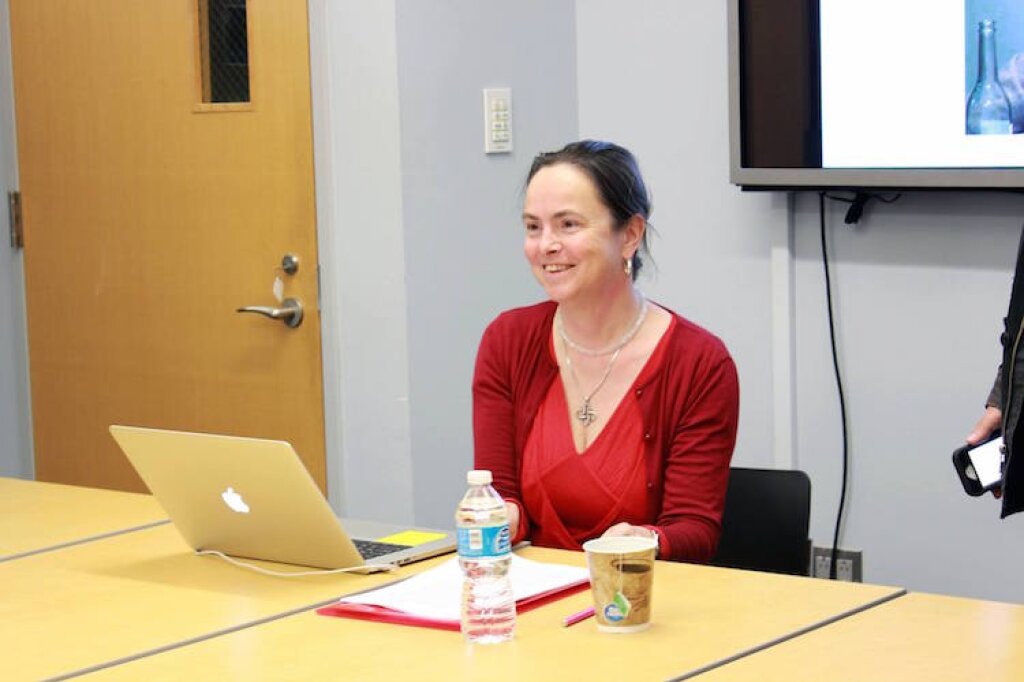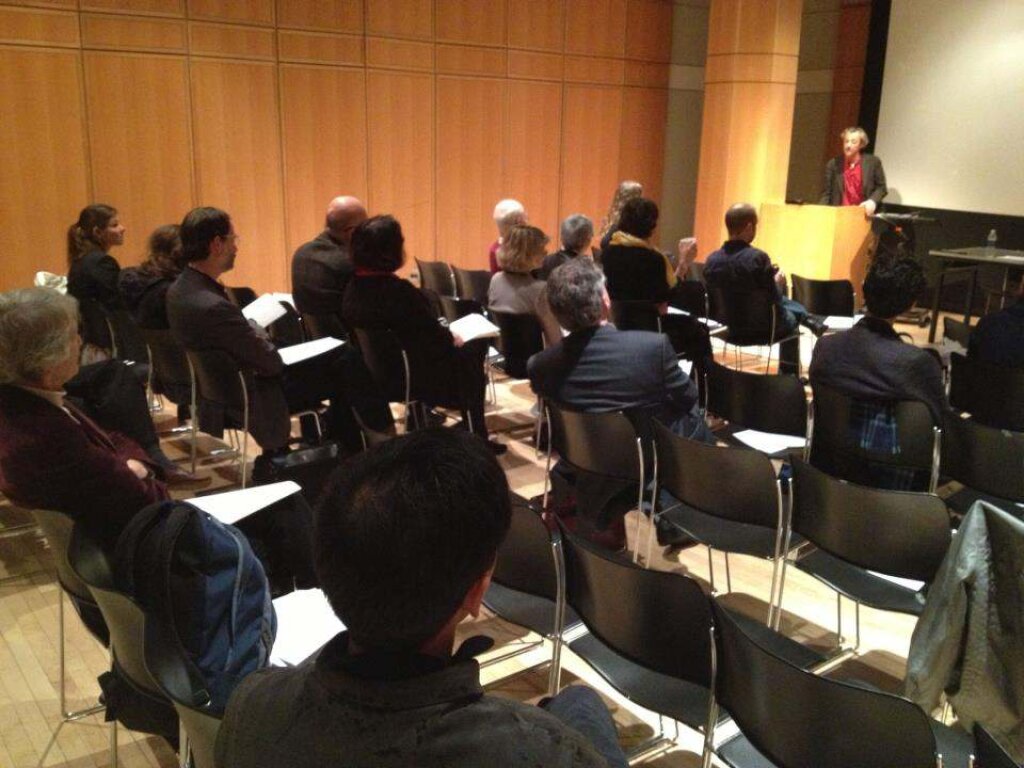Watch the video of the event here
On Nov. 13, 2014, the Department of Nutrition, Food Studies and Public Health at NYU hosted “Yuri Lotman Does High Society,” a seminar featuring Darra Goldstein, Professor of Russian at Williams College and Founding Editor of Gastronomica: The Journal of Food and Culture. The event, part of the Feast and Famine series, was co-sponsored by the Jordan Center for the Advanced Study of Russia and the Steinhardt Food Studies Program.
Goldstein was called to talk about her latest work: curating the English-language edition of High Society Dinners – Dining in Tsarist Russia. The book, originally written by Yuri Lotman with his assistant Jelena Pogosjan, was translated by Marian Schwartz and is published by Prospect Books. During the event, a light lunch inspired by recipes contained in the book and prepared by students at the Department of Food Studies was served.
The book was first put together by Lotman, a seminal figure in structuralism and cultural semiotics, as a tome on “table talk.” Having obtained a series of menus detailing the food served at the table of Russian 19th-century aristocrat Petr Durnovo, Lotman creative a narrative adding a commentary enriched by extracts of Durnovo’s correspondence with his father as well as newspapers and journals. In her translated edition, Goldstein adds her notes – a task that proved to be quite demanding. “It turned out to be much more of a challenge than expected,” she said.
Lotman’s commentary aimed at providing context and highlighted the social element of the high society dinners hosted by Durnovo, a young aristocrat left in charge of the household while his parents sojourned in Europe. During the talk, Goldstein reminded the audience the historical background that informed the nature of the book. “We can’t just look at the menus without looking at the context,” she said.
In particular, she observed how the menus dated back to the period between 1857 and 1858, as the debate regarding the emancipation of Russian serfs – which would have lead to the 1861 reform – gained momentum. While news from Russia were of obvious relevance to the guests at Durnovo’s house, even events taking place miles away could have resonance. For example, Goldstein mentioned how the 1857 crash of the stock market in New York was among the topics of discussion among Russia’s upper circles at that time.
Subsequently, Goldstein went on to discuss the challenges she faced in approaching the Russian-language version of the book. The problems were varied, but often referred to difficulties in understanding what types of food were listed in the menu. “You can look at the dishes that are presented and you don’t necessarily know what they are,” Goldstein said.
Aside from the scholarly problems faced (often rendered in Lotman’s texts in transcription as well as transliteration inaccuracies), Goldstein lamented the lack of “a human voice” and of an “evocation of the atmosphere” that might have been found, had the menus been compiled by the khoziaika [hostess] together with the house staff. Discussing the lack of a psychological layer, Goldstein also introduced the topic of her emotional anxiety dealing with the work of an author she greatly admired. “Here was the great Yuri Lotman,” she said, “and I don’t think he ever set foot in the kitchen.”
Commenting on the quality of the food served at Durnovo’s table, Goldstein remarked that “they were eating very well.” The extraordinary range of vegetable is what struck her the most, with cardoons and artichokes served alongside beef. As regards the style, Italian stufatos and maccheroni found their place next to French dishes, but a distinctive Russianness was preserved through the presence of grechnevaya and gurevskaya kasha [buckwheat kasha and sweet kasha].
Delving into a discussion of the context within which Lotman’s version of High Society Dinners came to be, Goldstein noted that the readers should not forget that the book shows 19th-century St. Petersburg through the eyes of a Soviet scholar. During the Soviet Union writing about the elite might have been perceived as rather superficial, while the focusing on a subject such as the nobility might have placed him in a uncomfortable position within the “classless” Soviet society.
Answering questions from the audience, Goldstein noted how the way in which Lotman came across Durnovo’s diaries is not clear and that not much information was available regarding the house staff. Again, she pointed out how the result would have been different, had the menus been compiled by the hostess. “Had there been a woman in the house, there would have been a lot more details about that,” she said.
Another element missing from Lotman’s work, according to Goldstein, was an analysis of the subject matter. “He didn’t do his deep thinking in it,” she said, explaining how writing in isolation, with no access to the latest scholarship, might have play a role.
When Professor Bruce Grant of the NYU Faculty of Anthropology asked whether Lotman might not have taken up the project simply because, during particular years of economic privation, he was “simply hungry,” Goldstein took the occasion to discuss the emotional response of Lotman to the work and the travails he had to go through, at a time when “the study of food was considered elitist, irrelevant and potentially subversive”. She expressed, however, her reluctance to define Lotman’s interest in food studies as a form of escapism. She concluded noting that book was “an absolutely perfect project for him,” which reflected his overall approach to culture.



